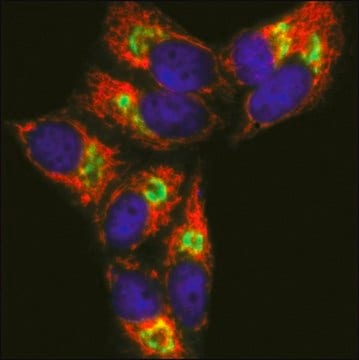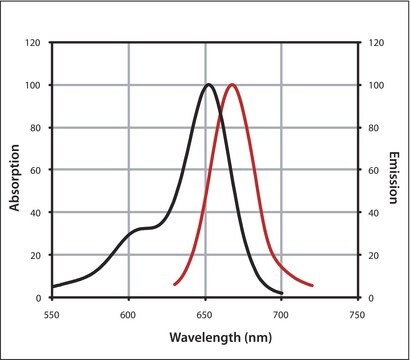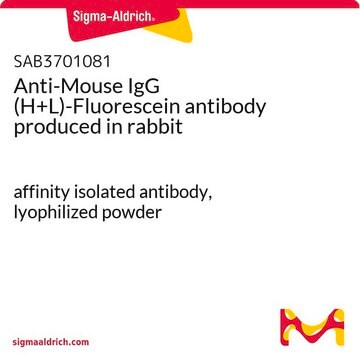SAB4600141
Anti-Rabbit IgG (H+L), highly cross-adsorbed, CF™ 633 antibody produced in goat
~2 mg/mL, affinity isolated antibody
About This Item
Recommended Products
biological source
goat
Quality Level
conjugate
CF™ 633 conjugate
antibody form
affinity isolated antibody
antibody product type
secondary antibodies
clone
polyclonal
form
buffered aqueous solution
species reactivity
rabbit
concentration
~2 mg/mL
technique(s)
flow cytometry: 1-10 μg/mL
immunocytochemistry: suitable
immunohistochemistry: suitable
indirect immunofluorescence: 1-10 μg/mL
fluorescence
λex 630 nm; λem 650 nm
shipped in
dry ice
storage temp.
−20°C
target post-translational modification
unmodified
Related Categories
General description
CF™ dyes are a series of highly water-soluble fluorescent dyes, with wavelength extended over the visible and near-infrared (IR) spectrum for labelling biomolecules, mainly proteins and nucleic acids. Primary structure of the CF™ dyes is either cyanine dyes or rhodamine dyes. CF™ 633 produce the brightest antibody conjugates among spectrally similar dyes when excited by the 633nm He-Ne laser or the 635nm red diode laser. The most important advantage of CF™ 633 is its excellent photostability. Molecular weight of CF™ 633 is ~820 and its absorption/emission maxima is at 630/650nm.
Specificity
Immunogen
Features and Benefits
Physical form
Preparation Note
Legal Information
Disclaimer
Not finding the right product?
Try our Product Selector Tool.
Storage Class Code
10 - Combustible liquids
WGK
WGK 2
Flash Point(F)
Not applicable
Flash Point(C)
Not applicable
Regulatory Listings
Regulatory Listings are mainly provided for chemical products. Only limited information can be provided here for non-chemical products. No entry means none of the components are listed. It is the user’s obligation to ensure the safe and legal use of the product.
JAN Code
SAB4600141-250UL:
SAB4600141-50UL:
Certificates of Analysis (COA)
Search for Certificates of Analysis (COA) by entering the products Lot/Batch Number. Lot and Batch Numbers can be found on a product’s label following the words ‘Lot’ or ‘Batch’.
Already Own This Product?
Find documentation for the products that you have recently purchased in the Document Library.
Our team of scientists has experience in all areas of research including Life Science, Material Science, Chemical Synthesis, Chromatography, Analytical and many others.
Contact Technical Service







